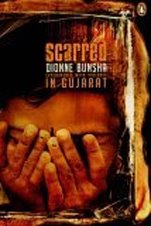Dam lies
As Narmada River dams continue to rise, so too do the protests about the homes and livelihoods disappearing under dam waters... and the government lies about those who are displaced.
DIONNE BUNSHA
It started as just another VIP visit. With platoons of security guards, fleets of flashing cars and bowing bureaucrats in tow, three Ministers of the Indian Government were sent by the Prime Minister Manmohan Singh to assess whether villagers submerged by the Sardar Sarovar Project (SSP) – a huge dam on the Narmada river – had been resettled properly.
So the Ministers made their way from New Delhi, the capital, to Madhya Pradesh in central India, one of the three states affected by the project. The first stop: the red-carpet welcome by Madhya Pradesh’s chief minister Shivraj Singh Chouhan. He assured them that all project-affected families (PAFs) would be rehabilitated by 30 June 2006. On that optimistic note, Saifuddin Soz (Minister of Water Resources), Meira Kumar (Minister of Social Justice and Empowerment) and Prithviraj Chavan (from the Prime Minister’s office) set out to visit the submerging villages.
What they experienced shocked them. Their conversations with people at resettlement sites provoked them to write an honest, scathing report exposing the State Government’s lies. Their report – written confidentially – has just been published in The Hindu newspaper. The officials trailing the VIP team were silent. They couldn’t dispute what they saw.
Though the Supreme Court (SC) had ordered that families displaced by the dam must be compensated with land, the Madhya Pradesh Government had little land to give. To some, the Government had offered barren land. The team met only two families who had accepted, while 405 had refused. To the rest, the Government was pushing cash compensation. But the money wasn’t enough to buy even two acres of land, let alone the five acres to which they are entitled. The Ministers were shocked to learn that for every 100,000 rupees ($2,232) of cash compensation given, the Government was deducting 90,000 rupees as income tax. ‘A bribe of 20,000 rupees had to be paid for the receipt of every cheque given,’ reported the Ministers.
Dharmapur – the largest resettlement site, touted as a success story – ‘turned out to be the worst example of not doing anything’, reported the Ministers. ‘It was not possible for anyone to live there as no infrastructure had been built… not a single plot of land has been occupied by any PAF… [even though] in official papers it has been indicated that the PAFs have been settled.’

But this damning report – together with its central recommendation that the dam height should not be raised any further until resettlement is complete – has failed to halt the rising waters. The Narmada Control Authority has decided to raise the dam height by another 10 per cent (from 110.76 to 121.92 metres). It will defy the Supreme Court’s ruling that people should be rehabilitated fully six months beforehand, as 13,233 families have yet to be resettled at the current height. In addition, it will drown the homes of another 8,987 families. Throughout April, two displaced people, Jamsing Nargave and Bhagwatibai Jatpuria, and their leader Medha Patkar from the Narmada Bachao Andolan (NBA) – a group fighting for the rights of displaced – undertook a 20-day long hunger strike in Delhi in protest. In a bizarre twist, they were sent to hospital during their fast and then arrested for attempting suicide.
Gujarat’s right-wing Chief Minister, Narendra Modi (Worldbeaters, NI 356), started his own hunger strike to counter that of the activists. Stopping the dam’s construction, he said, would deny water to the drought-hit areas of Gujarat. It’s still doubtful how much Gujarat will gain from the SSP. According to the Government, the scheme will provide irrigation to 3,112 drought-prone villages in Gujarat and around 135 urban centres and 8,215 villages in that province will get drinking water. Yet most of the water will be going to the rich areas of south central Gujarat, while the drought-ridden areas of Saurashtra and Kutch will get a mere two per cent. Nevertheless, the country’s most powerful came out in support of Modi and his party people ransacked the NBA’s Vadodara office. Modi’s fast came to an end in less than 24 hours when the Supreme Court said work on the dam would continue for ten days till Governments submitted status reports on rehabilitation.
The Sardar Sarovar project will have 30 big dams, 135 medium dams and 3,000 small dams. The cost is high: the NBA estimates that once complete, the dam will have displaced 700,000 people. The reservoir alone will displace 51,445 families (more than 257,000 people) from 245 villages, of whom 27,934 families in 186 villages are already affected. Around 47,000 hectares of forest and 12,000 hectares fertile plains will be lost.
Many others are affected by the dam, like those displaced by irrigation canals, pumping stations, deforestation and villages on hilltops that are now islands surrounded by water. Noorzi Padvi from Denil village in Maharashtra is now living on one of these islands in the mountains, cut off for a large part of the year. ‘I wasn’t offered any resettlement. We are totally stranded and have no way to survive,’ he said.
The poor are forced to pay the price for the pipe dreams of the powerful. That’s development, desi (Indian) style.
New Internationalist, June 2006
Read more at:
www.newint.org
www.narmada.org
www.sardarsarovardam.org
www.hindu.com/2006/04/17/stories/2006041705231100.htm
www.irn.org

No comments:
Post a Comment